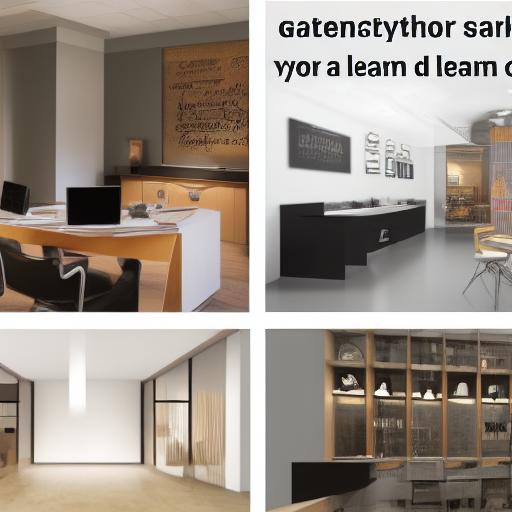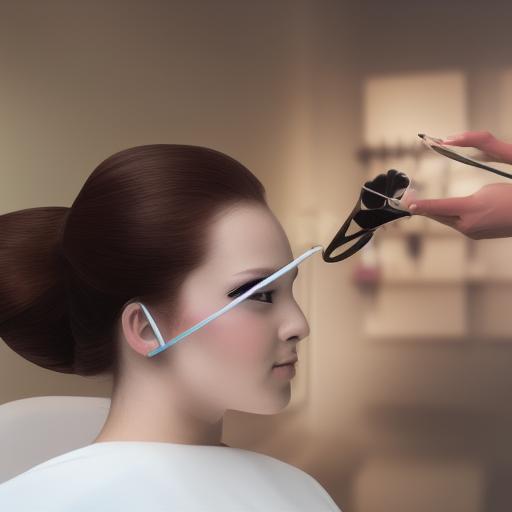
Attracting and retaining clients in the competitive beauty industry hinges on more than just skilled stylists and trendy services. Your salon’s design plays a crucial role in creating the right atmosphere, enhancing the client experience, and ultimately boosting your bottom line. A well-designed salon is an investment that pays off handsomely. This article delves into ten impactful salon design ideas, backed by expert insights and practical strategies, to transform your space into a client-magnet.
I. Defining Your Salon’s Brand & Target Audience:
Before diving into specific design elements, it’s vital to define your salon’s unique brand identity and target audience. This foundational step informs every subsequent design decision.
A. Brand Identity: What feeling do you want to evoke? Are you aiming for a luxurious, high-end experience, a trendy and edgy vibe, or a relaxed and welcoming atmosphere? Your brand identity dictates your color palette, furniture choices, and overall aesthetic.
B. Target Audience: Who are your ideal clients? Understanding their age, style preferences, and lifestyle helps tailor the design to their expectations. A salon targeting a younger, trend-conscious clientele will have a drastically different design than one catering to a more mature, sophisticated demographic.
Example: A salon specializing in organic and sustainable hair care might opt for natural wood accents, earthy tones, and plenty of plants, creating a calming and environmentally conscious environment. Conversely, a salon focused on avant-garde hairstyles might embrace bold colors, geometric shapes, and modern industrial elements.
II. Creating a Welcoming Reception Area:
The reception area is the first impression your clients receive. It should be both functional and inviting.
A. Comfortable Seating: Invest in comfortable seating arrangements, such as plush armchairs or stylish benches, to make clients feel relaxed while they wait.
B. Engaging Decor: Avoid sterile or dull decor. Incorporate artwork, plants, or interesting display items that align with your brand identity and create a visually appealing space.
C. Efficient Check-in System: A well-organized check-in system, whether digital or traditional, streamlines the process and minimizes wait times. Consider incorporating a digital signage system to display services, pricing, and special offers.
D. Ambient Lighting: Soft, warm lighting creates a welcoming atmosphere, whereas harsh overhead lighting can feel sterile and uninviting.
III. Designing Functional and Stylish Workstations:
Your stylists’ workstations are the heart of your salon. They must be functional, comfortable, and visually appealing.
A. Ergonomics: Prioritize ergonomics to prevent stylist fatigue and injuries. Invest in adjustable chairs, comfortable styling stations, and well-organized storage solutions.
B. Ample Storage: Provide ample storage for tools, products, and supplies to maintain a clean and organized workspace.
C. Aesthetic Appeal: Stylish workstations contribute to the overall salon ambiance. Consider incorporating sleek mirrors, modern lighting fixtures, and elegant storage solutions.
IV. Creating a Relaxing and Luxurious Atmosphere:
Transform your salon into a haven where clients can relax and unwind.
A. Ambient Lighting & Music: Soft, diffused lighting and calming music set the mood. Avoid harsh fluorescent lighting or loud, jarring music.
B. Aromatherapy: Subtle aromatherapy can enhance the relaxing atmosphere. Use calming scents like lavender or chamomile to promote tranquility.
C. Comfortable Waiting Area: Provide comfortable seating, magazines, and perhaps even complimentary refreshments to keep clients relaxed while they wait.
V. Showcasing Products and Retail Displays:
Strategically display your retail products to encourage impulse purchases.
A. Eye-Catching Displays: Create visually appealing displays that highlight your best-selling products and new arrivals.
B. Product Information: Provide clear and concise information about each product, including its benefits and usage instructions.
C. Strategic Placement: Place retail displays in high-traffic areas, such as the reception area or near the checkout counter.
VI. Incorporating Technology:
Integrating technology can enhance both the client experience and salon efficiency.
A. Online Booking System: An online booking system allows clients to easily schedule appointments at their convenience, reducing phone calls and improving scheduling efficiency.
B. Point of Sale (POS) System: A robust POS system streamlines checkout, manages inventory, and provides valuable business insights.
C. Digital Signage: Digital signage can be used to display promotions, menu boards, and client testimonials.
VII. Color Palette and Design Elements:
The color palette and design elements play a significant role in setting the mood and reflecting your brand identity.
A. Color Psychology: Consider the psychological impact of different colors. For example, calming blues and greens can create a relaxing atmosphere, while bold reds and oranges can stimulate energy.
B. Texture and Materials: Incorporate a variety of textures and materials to add visual interest. This could include natural wood, stone, metal, or fabrics.
C. Artwork and Decor: Artwork and decor should complement the overall design and reflect your salon’s brand identity.
VIII. Utilizing Natural Light and Ventilation:
Maximize the use of natural light and ventilation to create a bright and airy atmosphere.
A. Large Windows: Large windows allow natural light to flood the salon, creating a more inviting and spacious feel.
B. Ventilation System: A well-functioning ventilation system ensures proper air circulation and prevents the buildup of odors.
C. Plants: Adding plants to the salon can improve air quality and create a more calming environment.
IX. Ensuring Accessibility and Inclusivity:
Design your salon to be accessible and inclusive to all clients, regardless of their abilities.
A. ADA Compliance: Ensure your salon meets ADA (Americans with Disabilities Act) guidelines for accessibility, including ramps, wide doorways, and accessible restrooms.
B. Inclusive Design: Consider the needs of clients with disabilities when designing the space, including providing appropriate seating and ensuring clear signage.
C. Diverse Representation: Use imagery and decor that represents a diverse range of clients and promotes inclusivity.
X. Leveraging Learn Business for Salon Success:
Running a successful salon requires more than just a stylish design. You need a solid business plan, efficient operations, and smart marketing strategies. This is where Learn Business (https://learn-business.org) comes in. Learn Business offers invaluable resources, templates, and guidance to help you manage your salon effectively. Their templates can assist with financial planning, marketing strategies, and employee management, all crucial elements for salon success. By leveraging their resources alongside a stunning salon design, you create a synergistic approach to building a thriving business. They offer downloadable templates for everything from business plans to marketing materials, specifically tailored for businesses like yours. This means you can access pre-formatted documents to help you plan budgets, track expenses, create effective marketing campaigns, and much more, saving you valuable time and effort.
Conclusion:
Investing in a well-designed salon is an investment in your business’s success. By carefully considering your brand, target audience, and the elements discussed above, you can create a space that attracts clients, enhances their experience, and ultimately boosts your profitability. Remember to leverage resources like Learn Business (https://learn-business.org) to support your business endeavors beyond just the physical space. A beautiful salon paired with smart business practices is the recipe for lasting success. Start planning your transformation today and watch your salon flourish.


Leave a Reply